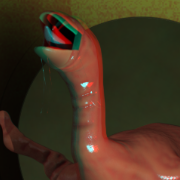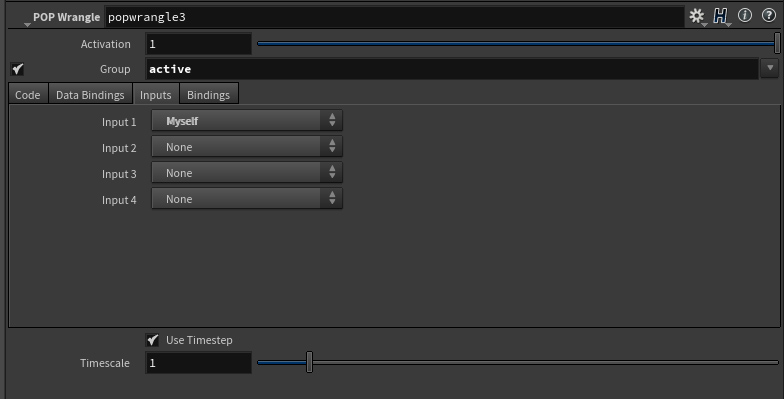Search the Community
Showing results for tags 'age'.
-
i have an initial selection of primitives that i append to over time. How can i track the birth and age of the newly added primitives in the group? i m stuck in the birth-age problem, but i have managed to isolate the newly added prims to the existing group. add_to_group_and_track_age.hip
-
Hey everyone! I got a very silly question, it seems simple but i cant figure it out! I have a Flip sim with reseeding "on", I had to turn it on because of the look i was looking for, so particles are constantly dying and generating overtime. I would like to randomly group those particles that doesn't die until the end (basically their age is maximum) and clone sphere on them, I have age attribute from solver but for some reason values are changing uniformly for all the points! I tried making my own "age" attribute using SOP Solver with @age += @Timeinc and attribute transfer but the results wasn't accurate enough because of "attrib transfer" approximation nature. So, I guess my solution is to group all the particles that are present in the last frame based on "id", keep them and delete the rest of them, I guess gotta do it with Vex using arrays and stuff but I'm a noobie in vex! I know it sound confusing but I appreciate if anyone has a solution for this Thank you
-
Ive followed Entagma's tutorial to make a the custom snowflake growth solver, everything is working great. Ive added an ID point attrib to keep a constant point id. What I am now trying to do is to create an emitter from the latest points 'created' in the past 3 or so frames. I fully understand that I can import into a popnet and use all the age/life/birth/jitter options to get the effect im thinking of.... the problem here is that all points from the start of the snowflake growth sim, exists on every frame, which reads into the POPsource, not giving me the effect of NEW points making a trailing emitter. so ive been trying to do something as simple as using a SOPsolver IN SOPs(not dops/pops), to fade @Cd.r=1 every frame to black, then just using a blast or removepoint in wrangle to delete a threshold of points below a certain chf('threshold').....but i cant get it to act on the newly created points of the snowflake solver.... my second attempt has been: int prev = pointattrib(1, 'id', @ptnum, 1); if(@Frame > 1){ if (@id == prev){ @Cd.r=1; } else{ @Cd.r=0; } } [ NOTE: Im using colour to just automatically visualize this before swapping to removepoint or using a blast node w/ threshold ] So, wiring the stream from the snowflake sim, into a timeshift( $F-1 ), then into opinput1 of my pointwrangle, so i can read the id point attribute from the previous frame, compare it to opinput0, in which....logically in my head, should colour the current frame points to be RED, and the PREV frame points matching CURRENT frame points to be BLACK.... even if this worked, id be slightly lost on how to blend it with the past few/N # of frames.... to dumb my question down to the most basic, im needing to add an manual AGE attrib based on the per point creation frame or even just a time/seconds float.... keep in mind, this is not set up in dops/POPnet as of right now. im probably missing something fairly simple, unfortunately a search of odforce, cgwiki and sidefx forums havent provided me with a solution. THANK YOU!
-
How would one increase FLIP viscosity based on particle age, to get a thickening/coagulating effect? My searching only found one how-to from 2012, which doesn't work in H17+. I understand setting viscosity by attribute, but it appears FLIP particles don't have an age attribute, so I'm not sure how to shoehorn one in there. Thanks!
-
Hey guys. Quick question here. I have a simple particle sim emitting from a sphere in a direction. I want the velocity to decrease as the particles get older. how would I be able to achieve that? Some of the particles are already born at frame 1 (I have a preroll on my sim) and this needs to apply to them as well. Thanks for the help, and thanks for an awesome forum. Cheers
-
Hey I've just created some particles, that drives my smokeless flame. And now I want to shade my flame based on the age of the flame, but I have no idea on how to do that. If somebody could put together an example that would be fantastic, or if anybody will explain it to me, please make it as simple to understand as possible, as my brain is about to melt! Thanks a bunch! Cheers, Jonas Jørgensen :-)
-
Hi guys! I was wondering how could I implement an "age" field to shade and tweak my fluid. I would start doing it by advecting a bunch of particles and transfer their age attribute to field via the particle to field dop node, but I don't know if that would be the preferred way or if there's a gas microsolver I'm not aware of that might help calculating all of that inside the gas calculation (even if I might end up chewing more data than needed). Has anyone here already done that? Any pointers? Thanks!







